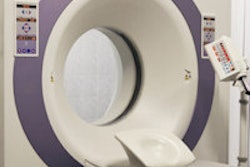Monday, December 1 | 3:10 p.m.-3:20 p.m. | SSE22-02 | Room S403B
In this presentation, researchers from Massachusetts General Hospital will present their method for computer-aided detection (CAD) of virtual-monochromatic dual-energy CT colonography (CTC) studies.Colorectal cancer is one of the leading causes of cancer-related mortality, but the cathartic bowel preparation for colorectal examinations is the single most important reason for low patient adherence to colorectal cancer screening. A recent large study concluded that computer-aided, laxative-free CTC can yield high detection performance for adenomas 10 mm and larger while providing a significant improvement in perceived patient comfort. But the technique's detection accuracy was lower for smaller polyps and flat lesions, said presenter Janne Nappi, PhD.
"In conventional computer-aided, laxative-free CT colonography, the performances of [CAD] and electronic cleansing are limited by image artifacts and partial-volume effects that cannot be solved uniquely by single-energy CT methods," Nappi explained in an email to AuntMinnie.com. "Therefore, we are investigating the application of virtual-monochromatic dual-energy CT colonography, which is able to provide material-based detection for solving partial-volume artifacts while minimizing image artifacts. The use of iterative reconstruction facilitates the acquisition of dual-energy CT images at a low dose."
The researchers developed a CAD system for use with these images, and they found that CAD "for noncathartic virtual-monochromatic dual-energy CT colonography can yield high detection accuracy for colorectal lesions 6 mm and larger at a clinically acceptable low radiation dose," Nappi said.




















